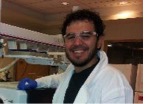
Research Project Full Title: Impact of Coagulation on Biofiltration: Simultaneous Removal of Multiple Chemical Contaminants
2-4 Word Description: Impact of Coagulation on Biofiltration
Principal Investigator(s): Drs. Mary Jo Kirisits and Lynn Katz
Researchers: Ricardo Lugo and Krista Stribling
Sponsor(s): Texas Hazardous Waste Research Center
Full Abstract:
A key problem in the drinking-water industry is to find effective treatment processes to remove an increasing variety and concentration of trace organic compounds (e.g., endocrine disruptors, pharmaceuticals, personal care products, and taste and odor compounds), many of which occur due to increased wastewater influence. The benefits of biofiltration including particle removal, biodegradation, and adsorption, make it an attractive process for addressing this problem. Biofiltration must be studied holistically, including its common upstream process of coagulation. Coagulation impacts the type and amount of organic matter entering the biofilter; this could influence microbial community structure and biodegradation, with implications for the removal of trace organics, trihalomethane formation potential and total/dissolved organic carbon.
The goal of proposed work is to develop a holistic understanding of coagulation-biofiltration. Specific objectives are to examine the impact of coagulant type (ferric iron and alum) and pH/dose on the simultaneous removal of multiple trace organic compounds by biofiltration and on the biofilter microbial community. Together, these data will show if coagulation can be tailored to influence community composition and to maximize the overall removal of trace organic compounds in the combined coagulation-biofiltration process.
